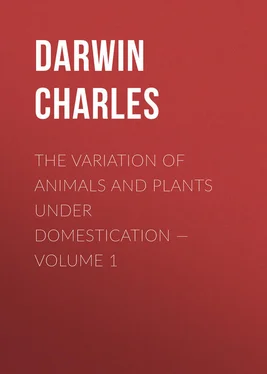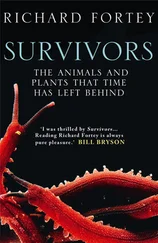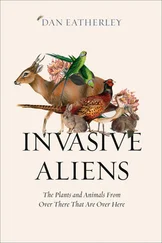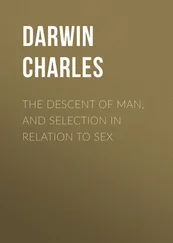Charles Darwin - The Variation of Animals and Plants under Domestication — Volume 1
Здесь есть возможность читать онлайн «Charles Darwin - The Variation of Animals and Plants under Domestication — Volume 1» — ознакомительный отрывок электронной книги совершенно бесплатно, а после прочтения отрывка купить полную версию. В некоторых случаях можно слушать аудио, скачать через торрент в формате fb2 и присутствует краткое содержание. Жанр: foreign_antique, foreign_prose, на английском языке. Описание произведения, (предисловие) а так же отзывы посетителей доступны на портале библиотеки ЛибКат.
- Название:The Variation of Animals and Plants under Domestication — Volume 1
- Автор:
- Жанр:
- Год:неизвестен
- ISBN:нет данных
- Рейтинг книги:5 / 5. Голосов: 1
-
Избранное:Добавить в избранное
- Отзывы:
-
Ваша оценка:
- 100
- 1
- 2
- 3
- 4
- 5
The Variation of Animals and Plants under Domestication — Volume 1: краткое содержание, описание и аннотация
Предлагаем к чтению аннотацию, описание, краткое содержание или предисловие (зависит от того, что написал сам автор книги «The Variation of Animals and Plants under Domestication — Volume 1»). Если вы не нашли необходимую информацию о книге — напишите в комментариях, мы постараемся отыскать её.
The Variation of Animals and Plants under Domestication — Volume 1 — читать онлайн ознакомительный отрывок
Ниже представлен текст книги, разбитый по страницам. Система сохранения места последней прочитанной страницы, позволяет с удобством читать онлайн бесплатно книгу «The Variation of Animals and Plants under Domestication — Volume 1», без необходимости каждый раз заново искать на чём Вы остановились. Поставьте закладку, и сможете в любой момент перейти на страницу, на которой закончили чтение.
Интервал:
Закладка:
It is scarcely possible to doubt that the long-continued selection of qualities serviceable to man has been the chief agent in the formation of the several breeds of the horse. Look at a dray-horse, and see how well adapted he is to draw heavy weights, and how unlike in appearance to any allied wild animal. The English race-horse is known to be derived from the commingled blood of Arabs, Turks, and Barbs; but selection, which was carried on during very early times in England (2/27. See the evidence on this head in 'Land and Water' May 2, 1868.), together with training, have made him a very different animal from his parent-stocks. As a writer in India, who evidently knows the pure Arab well, asks, who now, "looking at our present breed of race-horses, could have conceived that they were the result of the union of the Arab horse and African mare?" The improvement is so marked that in running for the Goodwood Cup "the first descendants of Arabian, Turkish, and Persian horses, are allowed a discount of 18 pounds weight; and when both parents are of these countries a discount of 36 pounds (2/28. Prof. Low 'Domesticated Animals' page 546. With respect to the writer in India see 'India Sporting Review' volume 2 page 181. As Lawrence has remarked ('The Horse' page 9), "perhaps no instance has ever occurred of a three-part bred horse (i.e. a horse, one of whose grandparents was of impure blood) saving his distance in running two miles with thoroughbred racers." Some few instances are on record of seven-eights racers having been successful.) It is notorious that the Arabs have long been as careful about the pedigree of their horses as we are, and this implies great and continued care in breeding. Seeing what has been done in England by careful breeding, can we doubt that the Arabs must likewise have produced during the course of centuries a marked effect on the qualities of their horses? But we may go much farther back in time, for in the Bible we hear of studs carefully kept for breeding, and of horses imported at high prices from various countries. (2/29. Prof. Gervais 'Hist. Nat. Mamm.' tome 2 page 144 has collected many facts on this head. For instance Solomon (1 Kings x. 28) bought horses in Egypt at a high price.) We may therefore conclude that, whether or not the various existing breeds of the horse have proceeded from one or more aboriginal stocks, yet that a great amount of change has resulted from the direct action of the conditions of life, and probably a still greater amount from the long-continued selection by man of slight individual differences.
With several domesticated quadrupeds and birds, certain coloured marks are either strongly inherited or tend to reappear after having been lost for a long time. As this subject will hereafter be seen to be of importance, I will give a full account of the colouring of horses. All English breeds, however unlike in size and appearance, and several of those in India and the Malay archipelago, present a similar range and diversity of colour. The English race-horse, however, is said (2/30. 'The Field' July 13, 1861 page 42.) never to be dun-coloured; but as dun and cream-coloured horses are considered by the Arabs as worthless, "and fit only for Jews to ride" (2/31. E. Vernon Harcourt 'Sporting in Algeria' page 26.), these tints may have been removed by long-continued selection. Horses of every colour, and of such widely different kinds as dray-horses, cobs, and ponies, are all occasionally dappled (2/32. I state this from my own observations made during several years on the colours of horses. I have seen cream-coloured, light-dun and mouse-dun horses dappled, which I mention because it has been stated (Martin 'History of the Horse' page 134) that duns are never dappled. Martin (page 205) refers to dappled asses. In the 'Farrier' (London 1828 pages 453, 455) there are some good remarks on the dappling of horses; and likewise in Col. Hamilton Smith on 'The Horse.'), in the same manner as is so conspicuous with grey horses. This fact does not throw any clear light on the colouring of the aboriginal horse, but is a case of analogous variation, for even asses are sometimes dappled, and I have seen, in the British Museum, a hybrid from the ass and zebra dappled on its hinder quarters. By the expression analogous variation (and it is one that I shall often have occasion to use) I mean a variation occurring in a species or variety which resembles a normal character in another and distinct species or variety. Analogous variations may arise, as will be explained in a future chapter, from two or more forms with a similar constitution having been exposed to similar conditions, — or from one of two forms having reacquired through reversion a character inherited by the other form from their common progenitor, — or from both forms having reverted to the same ancestral character. We shall immediately see that horses occasionally exhibit a tendency to become striped over a large part of their bodies; and as we know that in the varieties of the domestic cat and in several feline species stripes readily pass into spots and cloudy marks — even the cubs of the uniformly-coloured lion being spotted with dark marks on a lighter ground — we may suspect that the dappling of the horse, which has been noticed by some authors with surprise, is a modification or vestige of a tendency to become striped.
(FIGURE 1. DUN DEVONSHIRE PONY, with shoulder, spinal, and leg stripes.)
[This tendency in the horse to become striped is in several respects an interesting fact. Horses of all colours, of the most diverse breeds, in various parts of the world, often have a dark stripe extending along the spine, from the mane to the tail; but this is so common that I need enter into no particulars. (2/33. Some details are given in 'The Farrier' 1828 pages 452, 455. One of the smallest ponies I ever saw, of the colour of a mouse, had a conspicuous spinal stripe. A small Indian chestnut pony had the same stripe, as had a remarkably heavy chestnut cart-horse. Race-horses often have the spinal stripe.) Occasionally horses are transversely barred on the legs, chiefly on the under side; and more rarely they have a distinct stripe on the shoulder, like that on the shoulder of the ass, or a broad dark patch representing a stripe. Before entering on any details I must premise that the term dun-coloured is vague, and includes three groups of colours, viz., that between cream-colour and reddish-brown, which graduates into light-bay or light-chestnut — this, I believe is often called fallow-dun; secondly, leaden or slate-colour or mouse-dun, which graduates into an ash-colour; and, lastly, dark-dun, between brown and black. In England I have examined a rather large, lightly-built, fallow-dun Devonshire pony (Figure 1), with a conspicuous stripe along the back, with light transverse stripes on the under sides of its front legs, and with four parallel stripes on each shoulder. Of these four stripes the posterior one was very minute and faint; the anterior one, on the other hand, was long and broad, but interrupted in the middle, and truncated at its lower extremity, with the anterior angle produced into a long tapering point. I mention this latter fact because the shoulder-stripe of the ass occasionally presents exactly the same appearance. I have had an outline and description sent to me of a small, purely-bred, light fallow-dun Welch pony, with a spinal stripe, a single transverse stripe on each leg, and three shoulder-stripes; the posterior stripe corresponding with that on the shoulder of the ass was the longest, whilst the two anterior parallel stripes, arising from the mane, decreased in length, in a reversed manner as compared with the shoulder-stripes on the above-described Devonshire pony. I have seen a bright fallow-dun cob, with its front legs transversely barred on the under sides in the most conspicuous manner; also a dark- leaden mouse-coloured pony with similar leg stripes, but much less conspicuous; also a bright fallow-dun colt, fully three-parts thoroughbred, with very plain transverse stripes on the legs; also a chestnut-dun cart- horse with a conspicuous spinal stripe, with distinct traces of shoulder- stripes, but none on the legs; I could add other cases. My son made a sketch for me of a large, heavy, Belgian cart-horse, of a fallow-dun, with a conspicuous spinal stripe, traces of leg-stripes, and with two parallel (three inches apart) stripes about seven or eight inches in length on both shoulders. I have seen another rather light cart-horse, of a dirty dark cream-colour, with striped legs, and on one shoulder a large ill-defined dark cloudy patch, and on the opposite shoulder two parallel faint stripes. All the cases yet mentioned are duns of various tints; but Mr. W.W. Edwards has seen a nearly thoroughbred chestnut horse which had the spinal stripe, and distinct bars on the legs; and I have seen two bay carriage-horses with black spinal stripes; one of these horses had on each shoulder a light shoulder-stripe, and the other had a broad back ill-defined stripe, running obliquely half-way down each shoulder; neither had leg-stripes.
Читать дальшеИнтервал:
Закладка:
Похожие книги на «The Variation of Animals and Plants under Domestication — Volume 1»
Представляем Вашему вниманию похожие книги на «The Variation of Animals and Plants under Domestication — Volume 1» списком для выбора. Мы отобрали схожую по названию и смыслу литературу в надежде предоставить читателям больше вариантов отыскать новые, интересные, ещё непрочитанные произведения.
Обсуждение, отзывы о книге «The Variation of Animals and Plants under Domestication — Volume 1» и просто собственные мнения читателей. Оставьте ваши комментарии, напишите, что Вы думаете о произведении, его смысле или главных героях. Укажите что конкретно понравилось, а что нет, и почему Вы так считаете.












